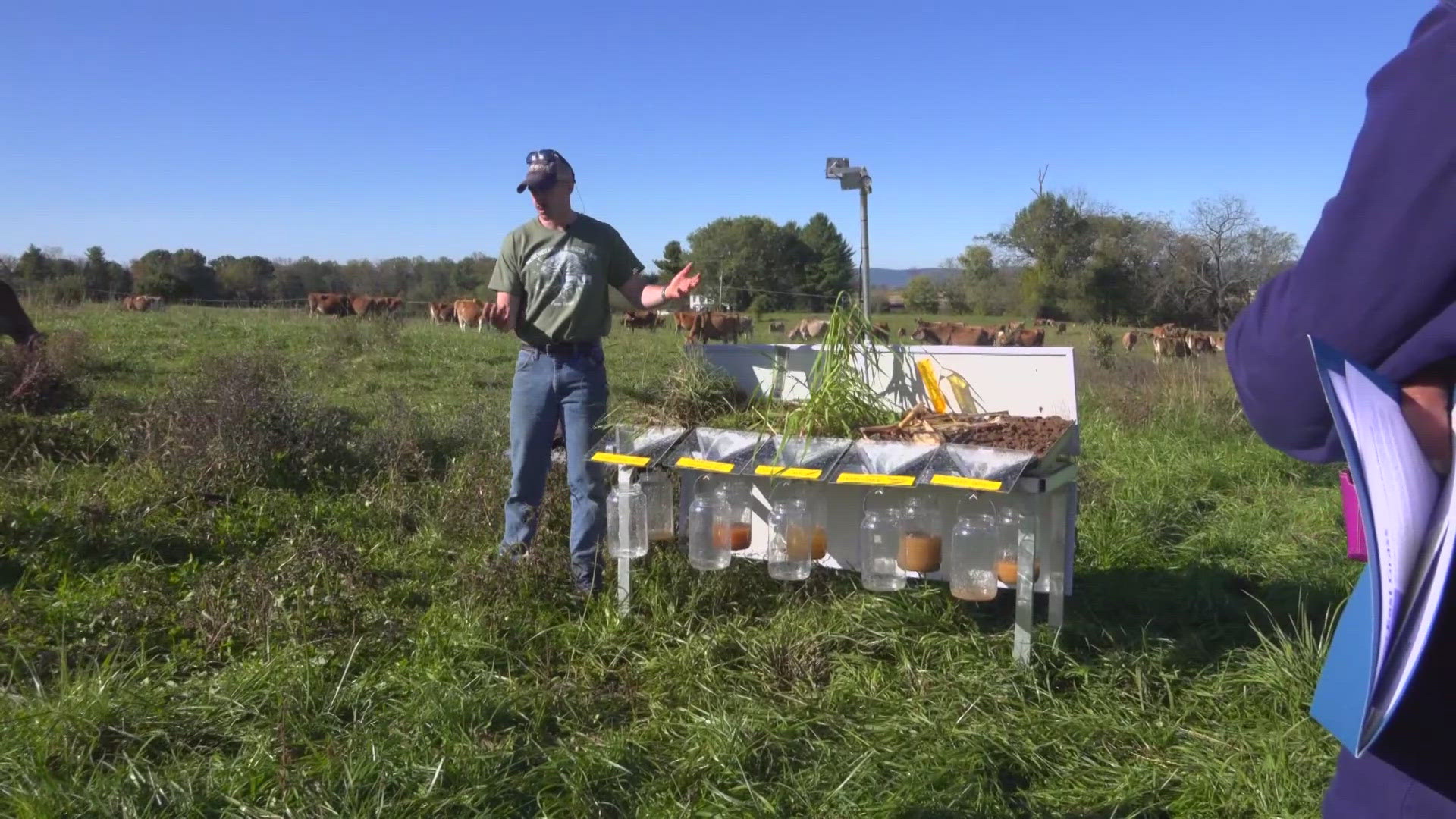JEFFERSON, Md. — If you’ve ever bought Organic Valley milk, the cows at Holterholm Farms in Frederick County Maryland and advocates for the Chesapeake Bay thank you.
The farm with 160 cows is held up as and example of the environmental and financial benefits of "regenerative agriculture," according to the Chesapeake Bay Foundation, which staged a tour of the farm on Oct. 18.
Farmer Ron Holter is an evangelist for regenerative agriculture which is defined as a practice that aims to improve soil health, restore biodiversity, and reduce the impact of climate change.
Holter showed visitors how he grazes his cows on a different section of pasture every day, so the grass can constantly recover and build higher levels of pollution filtering organic material in the soil.
While conventional farms pour money into carbon spewing diesel and water polluting fertilizer to cultivate soybeans and corn, Holter lets the grass grow and lets the cows do the work of fertilizing and building the soil with their manure.
During a farm tour, Holter conducted a tabletop demonstration of water running through soil samples. The regenerative turf held larger volumes of water and produced less life-choking sediment.
Holter recalled rain events before converting the farm when the runoff ran heavy with eroded soil.
He says water now leaving the farm typically runs clear, even after heavy rain.
"I was just like, 'Wow, we're not losing anything. This is fantastic!'” Holter told his audience.
Agriculture is the largest contributor of nitrogen and sediment pollution to the Chesapeake Bay, according to Rob Schnabel, a scientist with the Chesapeake Bay Foundation.
"But but at the same time, it has the greatest capability to fix those problems and help with our water quality as well as water quantity issues," Schnabel said.
Schnabel said regenerative agriculture restores soil to resemble a natural sponge that soaks up harmful runoff and holds soil in place.
The financial bottom line is lucrative according to data shared by the University of Maryland.
By eliminating costs like feed, fertilizer, and fuel for cultivation, Holter's farm makes $200 per acre more profit that similar traditional dairy farms.

